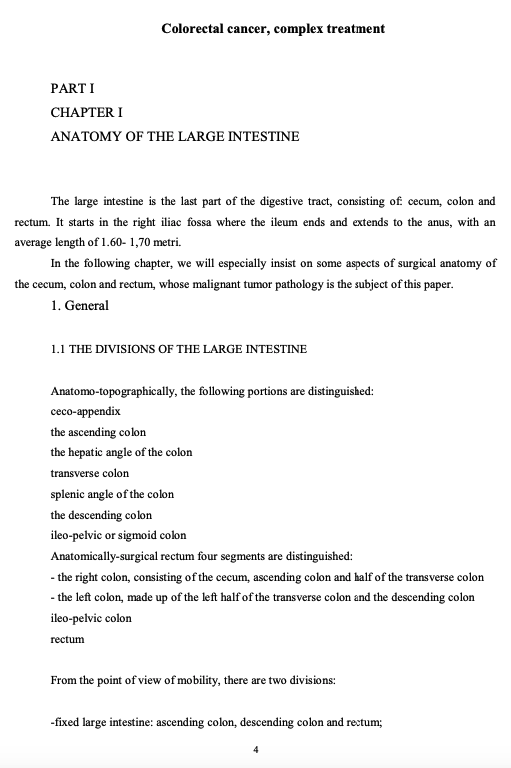Anatomy and Physiology of the Large Intestine
Summary:
The work begins with an in-depth exploration of the anatomy of the large intestine, highlighting its divisions, morphology, constitution, vascularization, innervation, and detailing the rectum. It also examines the relationships the large intestine has with neighbouring organs. The subsequent chapter dives into the physiology of the large intestine, focusing on its secretion, regulation, and motility. Definitions and terminology related to the topic are elucidated in Chapter III, while Chapter IV details the epidemiology. Chapter V investigates the etiopathogenesis of colorectal cancer, introducing the multistage theory of carcinogenesis and the classification from an etiopathogenic perspective. Morphopathology of recto colonic cancer is extensively studied in Chapter VI, addressing adenomas, malignant epithelial tumours, tumours of lymphoid tissue, and sarcomas. The next chapter provides insights into the staging, prognosis, metastatic disease, and screening processes, including TNM classification and prognostic factors. Clinical diagnosis of both uncomplicated and complicated colon cancer is discussed in Chapter VIII, and diagnostic explorations, both preventive and stabilizing, are covered in Chapter IX. Treatment methodologies for various stages and types of colorectal cancer, from curable stages to metastatic recto colonic cancer, are elaborated upon in Chapter X. Part II of the work presents the clinical material, its methods, and the results of the study. The final chapter delves into the clinic’s approach to treating colorectal cancer, introducing the sentinel lymph node concept and lymphatic mapping, followed by an extensive bibliography.
Excerpt:
Anatomy and Physiology of the Large Intestine
PART I
CHAPTER I
ANATOMY OF THE LARGE INTESTINE
The large intestine is the last part of the digestive tract, consisting of cecum, colon and rectum. It starts in the right iliac fossa, where the ileum ends and extends to the anus, with an average length of 1.60- 1,70 metres.
In the following chapter, we will especially insist on some aspects of the surgical anatomy of the cecum, colon and rectum, whose malignant tumour pathology is the subject of this paper.


Reviews